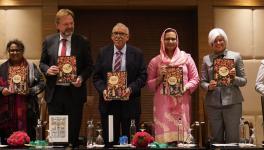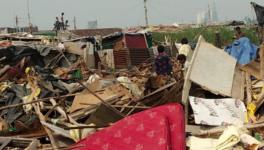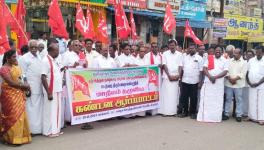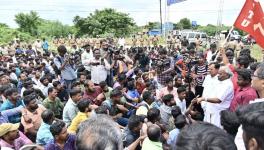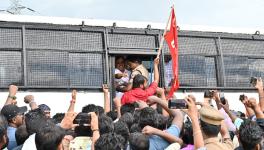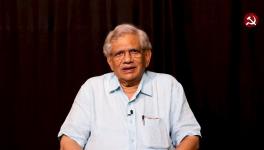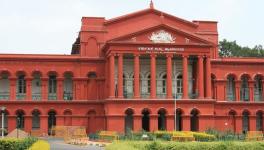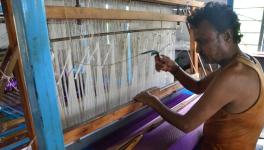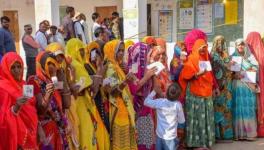Whatever Happened to Struggle Against Untouchability
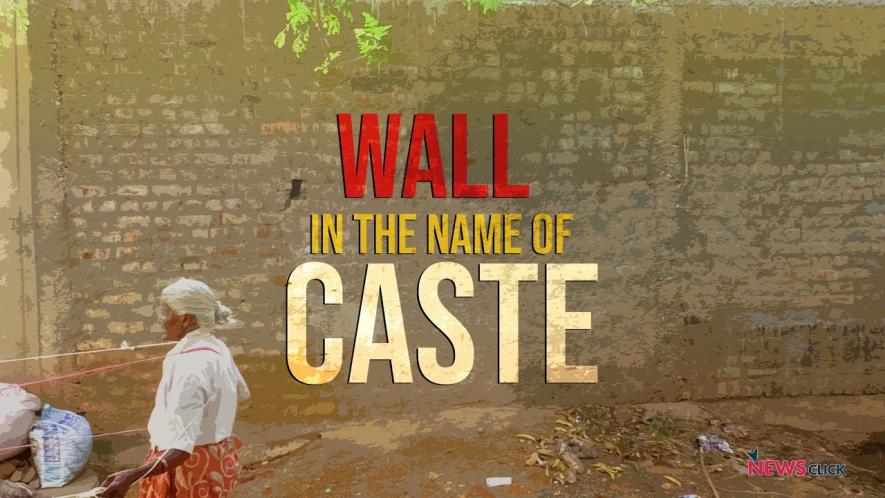
BR Ambedkar wrote in Annihilation of Caste that “...the world owes much to rebels who would dare to argue in the face of the pontiff and insist that he is not infallible. I do not care about the credit which every progressive society must give to its rebels. I shall be satisfied if I make the Hindus realize that they are the sick men of India, and that their sickness is causing danger to the health and happiness of other Indians.”
In 2008, Uthapuram, a village in Madurai, Tamil Nadu, had made national headlines. It was the year when the Karunanidhi-led DMK state government had taken the initiative to demolish a portion of a thirty-metre wall that had been raised by the dominant Pillaimar community, an OBC caste which had wanted to keep residents of the Devandra Kula Vellalar community, which falls under the Scheduled Caste category, out of the Mariamman temple.
Built in 1989, this wall had become a symbol of segregation based on caste and organisations like Tamil Nadu Anti Untouchability Front, along with other groups and individuals had been conducting agitations to end this discrimination. Finally, the DMK government was forced to take action.
This was perhaps the first time that the rest of India came to know about the prevalence of this pernicious practice in Tamil Nadu. The demolition of the wall was projected as a significant step to move towards caste annihilation.
The recent death of 17 dalits in Mettupalayam wall collapse, in which members of the arunthathiyar dalit caste lost their lives is a reminder of how our celebrations were premature. And that when it comes to caste and its attendant exclusions and discriminations, India still has miles to go.
In fact, in August this year there were reports in the media about another village, P Subbulapuram in Madurai, where an 800-metre “untouchability wall” had been built, allegedly by elite-caste Hindus, and how it had deterred the movement of dalits, confining them from three sides. The said wall had also blocked flow of sewage from their homes.
The immediate trigger for this disclosure was the death of V Shanmugavel, 50-year-old from the village, and the inability of his family to conduct his last rites because the cremation ground meant for dalits, which did not have a shed, was inundated due to the rains. Their requests to the elite castes to allow them to cremate the deceased on ‘their’ cremation ground had led to a furious reaction.
The dalits were forced to use petrol to cremate Shanmugavel’s body, and anti-untouchability activists had told the media about the great chasm between the claims of the state about having “eradicated untouchability” and the system of dual cremation grounds which still exists.
A similar case of discrimination was reported from a village in Vellore, when “members of the dalit community lowered a dead body from the top of a bridge using ropes allegedly after members of upper-class community denied them access to the common burial ground.”
Undoubtedly, Tamil Nadu, a state which prides itself on its more than hundred-year-old history of anti-caste struggle and social reform, and which seemed a pioneer in this arena, today appears to be a pale shadow of itself. What happened to anti-Brahminical struggle, the espousal of atheism by a section of its leadership and the painstaking effort of a battery of social reformers? The state has always played up its social reform legacy, for example, the legendary Jyothee Thass, writer, journalist, social reformer, Buddhist Scholar and Siddha Physician who was born in 1845 in a paraiyar family is considered a pioneer of not only the anti-Brahmin movement but the Dravida movement as well. Or Rettamalai Srinivasan, who went to Round Table Conference in the early thirties, MC Raja, Periyar Naicker and several others.
One of India's most industrialised states, which has taken the lead in implementation of the reservation policy, and in which the dalits account for a fifth of the over seven crore population, their struggle still goes on.
A few years back. C Lakshmanan, then assistant professor at the Madras Institute of Development Studies, had organised a seminar to look at the history of various commissions which have been set up to look into cases of dalit atrocities. He found that not a single person had been punished for atrocities against dalits in the last 70 years, though a dozen or so enquiry commissions have been set up. Not even one member of these commissions belonged to a dalit social group.
The NGO, Evidence, has recorded that dalits are not allowed to enter temples in 12 districts, and a number of dalit panchayat leaders are not allowed to function. Also, that 460 tea-shops in Madurai still follow the ‘two-tumbler system’.
The deep-rooted caste prejudice was best underlined at the time of the tsunami, when dalits were discriminated against by the backward castes, though both the social groupings were caught in the same situation.
With the passage of time, another complexity has got added to the issue; the discriminatory walls. These are being raised not just by caste Hindus against dalits but even in areas populated by castes categorised as Scheduled Castes. For example, in village Santhaiyur in Madurai, paraiyars raised such a wall against arunthathiyars, the ‘lowest’ among the dalits in 2013. This wall was demolished in 2018.
The paraiyars are those whose traditional caste occupation was to beat drums, and arunthahtiyars are leather workers, or sweepers and scavengers in Tamil Nadu, Kerala and Karnataka.
Commenting on this discrimination, Ravichandran Bathran, the founder of Dalit Camera, a YouTube channel said, “Caste Hindus used to term dalits as untouchables, carcass eaters and menial workers. This normalisation has now been adopted by paraiyars over arunthathiyars. In santhaiyur, this was what happened. paraiyars started to act like upper caste and arunthathiyars became the victims. Pallars have land and money and the paraiyars have strong leadership but both these factors are lacking in the case of arunthathiyars.”
The class conflict implicit in such incidents cannot be denied. In fact, within dalit communities a section has surged ahead, benefitting from various affirmative-action programmes, while a large majority has lagged behind.
Unless we question the caste system itself, we cannot find a solution to these atrocities. But we are questioning only the atrocities and not the root cause.
In November 2012, three dalit colonies of Natham, Kondampatti and Annanagar in Naikkankottai, Dharmapuri district, Tamil Nadu, had faced organised attack at the hands of vanniars, a dominant backward caste in the region because of the news that Ilavarasan, a young man from the arunthatiar community had married a vanniar girl. Under tremendous community pressure, the woman returned to her mother and Ilavarsan, hoping against hope that she would return, died an unnatural death.
The Economic and Political Weekly journal had written on this issue in July 2013, in Fighting Caste Fighting Patriarchy, raising two important points. “The limiting of social justice to identity assertion has seen the continuation of age-old caste antagonisms, rather than their gradual erosion. It is tragic and ironic to witness the revival of such fatal casteism in a state which pioneered powerful anti-caste movements in south Asia.” Secondly, “Ilavarasan’s tragic death is an indication that progressive forces need to come out more forcefully against the intermeshing of caste and patriarchy. Whether it is the middle-class families of India’s growing cities, or the Khap panchayats of rural north India or criminal politicians, it is becoming clear that caste cannot be fought without fighting patriarchy.”
No doubt, the struggle to eradicate caste or doing away with untouchability needs new ideas, new initiatives and a determination to make mountains move. Tamil Nadu’s experience goes to show that a progressive past is no guarantee that your present or future does not get marred by an utterly regressive turn.
Perhaps one need to pay attention to how Dr Ambedkar viewed the situation, again in Annihilation of Caste. “...breaking up of caste amongst the Hindus is well-nigh impossible. At any rate, it would take ages before a breach is made. But, whether the doing of the deed takes time or whether it can be done quickly, you must not forget that if you wish to bring about a breach in the system then you have got to apply the dynamite to the Vedas and the Shastras, which deny any part to reason, to Vedas and Shastras, which deny any part to morality. You must destroy the religion of the shrutis and the smritis. Nothing else will avail. This is my considered view of the matter.”
Subhash Gatade is an independent journalist. The views are personal.
Get the latest reports & analysis with people's perspective on Protests, movements & deep analytical videos, discussions of the current affairs in your Telegram app. Subscribe to NewsClick's Telegram channel & get Real-Time updates on stories, as they get published on our website.









